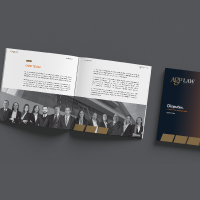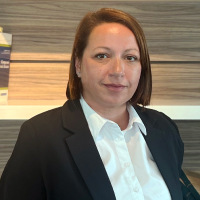
EU Trademark | Absolute and Relative Grounds for Refusal or Invalidity – Wordmark Analysis
Due to the increasingly competitive nature of business, entrepreneurs and companies are looking to differentiate themselves from their competitors, by securing and protecting their trademarks and brands, which serve to identify their products or services. By registering an EU trademark, the owner is capable of pursuing legal action if someone uses his/her/its trademark without prior authorisation. Further, during the application for the registration of a trademark, an existing trademark owner may oppose to such application if it adversely affects his/her/its own sign. Furthermore, according to Article 3 of EU Directive 2015/2436 (hereinafter the ‘EU Directive’) “trademark may consist of any signs, in particular words, including personal names, or designs, letters, numerals, colours, the shape of goods or the packaging of goods or sounds provided that such signs are capable of:
- Distinguishing the goods and services of one undertaking from those of other undertakings ; and
- Being represented on the register in a manner which enables the competent authorities and the public to determine the clear and precise subject matter of the protection afforded to its proprietor.”
Particularly, according to Faber Chimica Srl v European Union Intellectual Property Office Case T-211/03 a word mark is a mark consisting entirely of letters, words or associations of words, written in printed characters in normal font without any specific graphic element.
A word can be objected from a trademark registration based on Articles 4 or 5 of the EU Directive. Each Article will be examined in turn.
Absolute Grounds for Refusal or Invalidity (Article 4 of the EU Directive)
Article 4 of the EU Directive governs the absolute grounds for refusal of the registration of a trademark or invalidity considers the mark itself.
Further to Article 4(1)(a) of the EU Directive a wordmark should not be registered if it does not fulfill the trademark definition under Article 3 of the EU Directive.
Relevant Case law
Under Article 4(1)(b) of the EU Directive a wordmark must not be devoid of distinctive character. In order to be distinctive, a sign must serve to identify the product and/ or services in respect of which registration is applied for as originating from a particular undertaking and thus to distinguish the goods and/ or services from those of other undertakings (see Windsurfing Chiemsee Produktions- und Vertriebs GmbH (WSC) v Boots- und Segelzubehör Walter Huber and Franz Attenberger Joined Cases C-108/97 and C-109/97).
A wordmark’s distinctiveness should be assessed in terms of the goods or services in respect of which registration is sought and then to the relevant public’s perception of the aforementioned sign as per Eurohypo AG v Office for Harmonisation in the Internal Market (Trade Marks and Designs) Case C-304/06 P.
An objection under Article 4(1)(b) of the EU Directive is likely to apply in cases where the lexical structure that has been used, despite her non-right grammatical form can be considered to be frequent in advertising language and in the commercial context at issue. In the case of Bayerische Motoren Werke AG v OHIM (ECO PRO) (Case T-145/12) 2013/C 164/30, the combination of ‘ECO PRO’ was held to be perceived by the public as an indication that the designated goods are intended for ‘ecological professionals’ or are ‘ecological supporting’.
Furthermore, words are not considered distinctive if they are commonly used and have lost any capacity to distinguish goods and services. For instance, terms that are just showing a particular positive or appealing quality or function of the goods and services should be refused if applied for either alone or in combination with descriptive terms. For instances the term MEDI referring to medical as per Medi GmbH & Co. KG v Office for Harmonisation in the Internal Market (Trade Marks and Designs) (OHIM) T-470/09 has been refused either alone or in combination. Similarly the term PREMIUM as referring to ‘best quality’.
In OHIM v BORCO-Marken-Import Matthiesen GmbH & Co. KG C-265/09 the Court of Justice ruled that when trademarks consist of single letters it is important to assess whether the sign at issue is capable of distinguishing the different goods and services. For instance the single letter ‘C’ for ‘fruit juices’ is likely to be devoid of distinctiveness since the letter ‘C’ is often used to refer to vitamin C. On the other hand the letter ‘W’ in R1008/2010-2 case was accepted as distinctive in respect of ‘transport; packaging and storage of goods; travel arrangement’ in class 39 and class 43 ‘services for providing food and drink; temporary accommodation’.
Slogans
Generally, advertising slogans are objectionable under Article 4(1)(b) of the EU Directive when the relevant public perceives them as a mere promotional formula. However, in Smart Technologies ULC v OHIM C-311/11P the Court of Justice held that it is inappropriate to apply stricter criteria regarding slogans in terms of assessing their distinctiveness. In Audi AG v OHIM C-398/08 P the court listed a number of criteria which should be used when assessing the distinctiveness of a slogan. A slogan is likely to be perceived as more than a mere advertising message if it:
- Has more than one meanings;
- Constitutes a play on words;
- Introduces elements of conceptual intrigue or surprise;
- Includes a particular originality or resonance;
- Triggers a cognitive process to the minds of the relevant process or requires an interpretative effort;
- Existence of unusual syntactic structures;
- Use of linguistic and stylistic devices i.e. metaphor, rhyme.
For instance, slogans for EU Trademark
In Blackrock, Inc. v OHIM T-609/13 the slogan ‘SO WHAT DO I DO WITH MY MONEY’ for classes 35 and 36 was objected under Article 5(1)(b) since the expression prompts consumers to ask themselves what they should do with their assets and financial resources. On the facts of the case the average reasonably well-informed and reasonably observant and circumspect consumer of the application services on reading the slogan asks himself/herself whether he/she is using his/her money effectively. On the other hand, the slogan ‘WET DUST CAN’T FLY’ for classes 3, 7 and 37 under the case Pro-Aqua International GmbH v OHIM T-133/13 was accepted since the concept of ‘wet dust’ is literally inaccurate, consequently giving slogan a fanciful and distinctive character.
Further to Article 4(1)(c) of the EU Directive a word must be refused as descriptive if it has the meaning which is immediately perceived by the relevant public as providing information about the goods and services applied for. For instance if the word provides information about, “the quality, quantity, characteristics, purpose, kind, size of the goods or services”. Descriptive terms cannot fulfil the function of a trade mark.
For instance in Abbott Laboratories v OHIM C-21/12 P the term ‘RESTORE’ was held descriptive for surgical and medical instruments. However, in Merz & Krell GmbH & Co C-517/99 the word ‘BRAVO’ was not considered descriptive since it was unclear who says ‘BRAVO’ to whom under what circumstances.
Furthermore, a mere combination of elements each of which are considered descriptive, it would be concluded that the whole element remains descriptive.
Additionally, under Article 4(1)(f) and(g) of the EU Directive a word would be refused if it is contrary to public policy or is of such nature as to deceive the public.
Relative Grounds for Refusal or Invalidity of EU Trademark (Article 5 of the EU Directive)
Apart from the absolute grounds of refusal, a word mark can be objected under Article 5 further to the relative grounds for refusal or invalidity.
Under Article 5(1)(a) of the EU Directive a word mark should not be registered or if registered should be declared invalid if it is identical with an earlier trade mark and the applied goods are services are identical with earlier trademark.
Additionally, under Article 5(1)(b) of the EU Directive a word mark should not be registered or if registered should be declared invalid if it is similar or identical with an earlier trade mark and identical or similar goods or services are covered by the trade mark which establishes a likelihood of confusion on the part of the public.
A likelihood of confusion exists if there is a risk that the public might believe that the concerned goods or services come from the same undertaking or from economically-linked undertakings. If part of the relevant public is confused is sufficient. Further to the case of SABEL BV v Puma AG, Rudolf Dassler Sport C-251/95 at paragraph 23 the court held that the global appreciation of the visual, aural or conceptual similarity of the marks in question must be based on the overall impression given by the marks, bearing in mind, in particular, their distinctive and dominant components.
The first step in assessing if a likelihood of confusion exists depends on the overall assessment of the following independent factors including (1) the similarity of goods and services (2) the similarity of the signs (3) the distinctive and dominant elements of the conflicting signs (4) the distinctiveness of the earlier mark (5) the relevant public. The second step is to determine their relevance.
An objective comparison of the word marks needs to be made. All the elements of the signs are taken into account irrespective of their distinctiveness or dominance.
Identical marks for an EU Trademark
Further to ‘LTJ Diffusion’ (Arthur et Felicie) C/291/100 case a sign would be considered identical to the earlier trademark ‘where it reproduces without any modification or addition, all the elements constituting the trade mark or where, viewed as a whole, it contains differences so insignificant that they may go unnoticed by an average consumer’ .
Word marks are considered identical if both are purely word marks and overlap exactly in the string of letters or numbers. Differences in the use of lower or upper case or the typeface are immaterial.
Similar marks
Further to ‘Maratzen’ T-6/01 case, two marks are similar if in the relevant public’s point of view are at least partially identical regarding one or more relevant aspects. The comparison must consider the signs in their entirety.
In C-334/05 P ‘Limoncello’ case where negligent elements exist, the EUIPO is likely to skip comparing such elements from the outset after having duly reasoned why they are considered to be negligible.
Visual comparison
The visual comparison is based on an analysis of the number and sequence of the letters/characters, their position and the structure. However, due to the fact that the average consumer perceives a sign as whole, small differences such as the number of letters is not enough to exclude a finding of visual similarity.
In some cases figurative marks with word elements may be compared with word marks visually. What matters is whether the signs share a crucial number of letters in the same position and whether the word element in the figurative sign is highly stylized. Similarity can be found even though the letters are graphically represented in different typefaces, in italics or bold, in upper or lower case or in colour.
Phonetic comparison
For this assessment all the different pronunciations of the signs by the relevant public in all the official languages under which the earlier mark has been registered need to be examined. Local accents are not taken into account. In the case that a likelihood of confusion for at least one Member state and it is justifiable for reasons of economy of procedure, the EUIPO’s analysis does not need to extend to the whole EU, instead it can focus on just a part or parts where the likelihood of confusion exists.
The key elements for determining the overall phonetic impression of a trademark are the syllables and their particular sequence of stress. In the case that the opposing marks are formed by identical or similar syllables or words but in a different order, it would be concluded that signs are phonetically similar. In the case of T-67/08 ‘HEDGE INVEST’ and ‘InvestHedge’ were considered as phonetically similar.
A sign that contains foreign words, generally it will be assumed that the relevant public is not aware how foreign native speakers pronounce their own language and the pronunciation will depend on the phonetic rules of their own language. However, in the case when the relevant public is familiar with the word the correct pronunciation will be considered.
Conceptual comparison
Further to the Sabel case two signs will be considered similar or identical in concept when they are perceived as having the same or analogous semantic content. Semantic content considers what the mark means, evokes. The essential element is how the term is perceived by the relevant public.
When a wordmark is involved, the examiner will consider dictionaries and/or encyclopedias explanations of the word, in the language of the relevant territory. A complete dictionary definition is not always essential. It may be sufficient to use a synonym such storm=bad weather in Engelhorn KGaA v OHIM T-30/09.
Additionally, when the mark consists of a meaningful expression the meaning of such expression as a whole will be relevant for the conceptual comparison.
However, even if the average consumer normally perceives a mark as a whole, exceptionally when perceiving a word mark, he will break it down into elements. For instance when the sign itself is broken down visually or when all the parts suggest a common meaning known to the relevant public.
Finally, it is not essential for a word to be written properly for its semantic content to be perceived by the relevant public.
Taking everything into consideration, in order for a wordmark to be registered as a trademark and “pass” the hurdles under Articles 4 and 5 of the EU Directive, an extensive analysis should be made to consider both the mark as whole and its individual characteristics in the light of the specifics of each case. For the smooth registration of your EU trademark/wordmark, the correct legal guidance is crucial.
Please visit the Trademark Registration section of this website for submitting an EU Trademark registration request.














